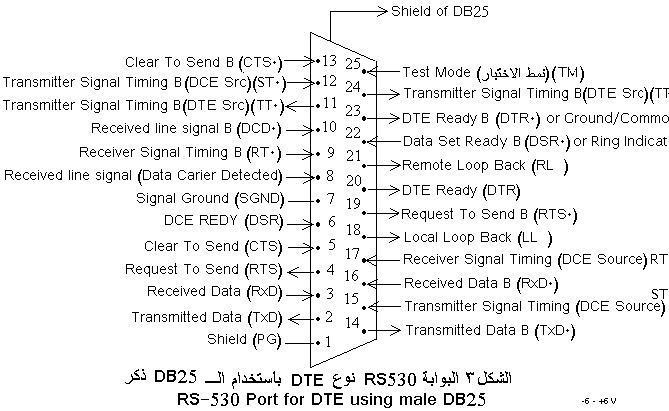 | ||
Currently known as TIA-530-A, but often called EIA-530, or RS-530, is a balanced serial interface standard that generally uses a 25-pin connector, originally created by the Telecommunications Industry Association.
Finalized in 1987 (revision A finalized in 1992), the specification defines the cable between the DTE and DCE devices. It is to be used in conjunction with EIA-422 and EIA-423, which define the electrical signaling characteristics. Because TIA-530 calls for the more common 25 pin connector, it displaced the similar EIA-449, which also uses EIA-422/423, but a larger 37-pin connector.
Two types of interchange circuits ("signals" or "leads") between the DCE and DTE are defined in TIA-530: Category I, which uses the balanced characteristics of EIA-422, and Category II, which is the unbalanced EIA-423. Most of the interchange circuits are Category I, with the exception of Local Loopback (pin 18), Remote Loopback (pin 21), and Test Mode (pin 25) being Category II.
TIA-530 originally used Category I circuits for what is commonly called "Data Set Ready" (DCE Ready, pins 6 and 22) and "Data Terminal Ready" (DTE Ready, pins 20 and 23). Revision A changed these interchange circuits to Category II (para 4.3.6 and 4.3.7 of the standard) and added a "Ring Indicator" on pin 22. Pin 23 is grounded in TIA-530-A.
Confusion between the revisions has led to many incorrect wiring diagrams of this interface and most manufacturers still adhere to the original TIA-530 standard. Care should be taken to ensure devices are of the same standard before connecting to avoid complications.
